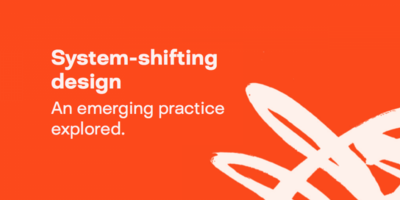NHS Blood and Transplant

In 2013, NHS Blood and Transplant worked with Design Council to create a tool that would better explain the career opportunities for staff and prospective recruits so it could attract and retain the talent needed to become the best organisation of its type in the world.
Challenge
NHS Blood and Transplant (NHSBT) supplies life-saving products and services required by NHS patients by collecting blood and tissue from volunteer donors from across England and north Wales.
In 2012, the organisation worked with an external design agency to identify a set of brand values which distilled into three key areas: Expert, Quality and Caring. NHSBT wanted to use these brand values to enable the whole organisation to perform better. It hoped to achieve this by evolving a more clearly defined internal culture. But it first had to address an important issue: how best to communicate NHSBT career development opportunities.
How to effectively communicate our career pathways was an important challenge.
Tracy Thurgood, NHSBT Head of Learning Delivery
At that time, career paths were only visible within departmental silos. This made it hard for employees – and potential new recruits – to understand how their career might progress across the organisation. Career development opportunities needed to be presented more clearly and aligned with NHSBT brand values.
“How to effectively communicate our career pathways was an important challenge,” explained Tracy Thurgood, NHSBT Head of Learning Delivery. “We are an organisation with a 6,000-strong workforce containing multiple professions. To ensure staff morale and retain talent, we wanted to demonstrate the scope for career development beyond the part of the business a person first joined.”
The hope was that staff frustration, staff turnover and recruitment costs could be reduced and interest among higher quality potential new recruits boosted by communicating more effectively using an electronic career route mapping tool that would visualise opportunities. The question was what form this aid might take, who would build it and how.
What we did
In early 2013, Design Council assigned experienced Design Associate Colum Lowe to work with NHSBT. Lowe led Thurgood and her team through a structured exploration of NHSBT staff and line managers’ needs, analysing how a career visualisation tool might be used and what form it might take.
What quickly became apparent was that many staff are without regular access to a computer. Furthermore, many line managers rarely undertake one-to-one interviews with staff. This meant that the electronic tool could do more than just visualise career paths – it could match people by skills to roles they might not have previously considered.
Lowe explained: “By enabling staff to better identify their knowledge gaps, the career-mapping tool could help staff take greater control over their own training and skills development. But with the right solution, it could also help NHSBT managers better match talent to jobs organisation-wide by identifying individuals’ skills and behaviours that might not otherwise have been spotted.”
Lowe encouraged Thurgood to consider who would be using the system and what challenges they face moving within the business. Three main users were identified: potential new employees who need to better understand the organisation and their likely career development within it, existing staff who want to better understand their future career development opportunities, and line managers.
With Lowe’s help, Thurgood and her team outlined the parameters of what was needed in a detailed design brief. The design challenge was to create an easily editable tool for both print and digital output.
NHSBT were then introduced to a number of external design agencies with appropriate skills and expertise. Finally, Wire Design was chosen and work began on identifying how the tool should work.
The tool evolved through lots of consultation with users.
A prototype of the new tool was created to demonstrate its operation, functionality and usability. This was then user tested to fine-tune different elements and prove the tool’s value to secure the further funding needed for its completion.
John Corcoran, Wire's Design Director, explained: “The tool evolved through lots of consultation with users. We built an initial version which was then trialled by a single business unit within NHSBT. This was important because with any piece of software you only identify the best ways to improve it once users start using it.”
Results
Working with our Design Associate made us think outside the box to understand what similarities there were in the skillsets needed across the business and how we could build on that.
Tracy Thurgood, NHSBT Head of Learning Delivery
Wire Design delivered the prototype of the NHSBT career route mapping tool, called ‘My Career Development Path’, in spring 2014. NHSBT began a six-month pilot in autumn that same year.
A second business case will be produced by April 2015 to secure the funding needed to develop a final version then launch it organisation-wide. Completion of the project will involve fine-tuning the tool according to user feedback gathered during the pilot phase. The finished tool will then be integrated with NHSBT’s existing learning management system.
Looking back, Thurgood describes the Design Council’s support as “invaluable.” She said: “Working with our Design Associate made us think outside the box to understand what similarities there were in the skillsets needed across the business and how we could build on that. The questions he asked and the process he guided us through made us address the challenge in a way that was different to what we were used to.”
Though not yet complete, the project has already delivered what NHSBT was looking for - a working tool that does what was needed. Thurgood believes: “It is usable from a staff point of view and identifies transferrable skills and job opportunities across NHSBT which will provide the organisation with clear recruitment, retention and cost benefits.”
Subscribe to our newsletter
Want to keep up with the latest from the Design Council?

